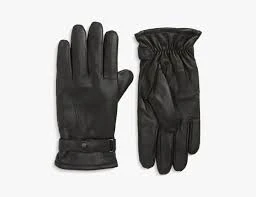Essential Guidelines for Choosing Heat Resistant Safety Apparel for Professionals
The Importance of Heat Resistant Safety Clothing in High-Risk Environments
In various industries, particularly those involving extreme temperatures and hazardous conditions, heat-resistant safety clothing plays a crucial role in protecting workers. The significance of these specialized garments cannot be overstated, as they are designed to mitigate the dangers posed by fire, heat, and other thermal hazards. This article will delve into the key features, benefits, and importance of heat-resistant safety clothing in ensuring the safety and well-being of workers in high-risk environments.
Understanding Heat-Resistant Clothing
Heat-resistant safety clothing is specifically designed to provide protection in environments where workers are exposed to high temperatures, flames, and thermal hazards. Common industries that require such clothing include manufacturing, metallurgy, welding, firefighting, and oil and gas operations. The materials used in heat-resistant clothing, such as aramid fibers, Nomex, and Kevlar, are engineered to resist ignition, withstand high temperatures, and maintain structural integrity even in extreme conditions.
Key Features of Heat-Resistant Clothing
1. Flame Resistance One of the primary features of heat-resistant garments is their ability to resist ignition and self-extinguish if a flame comes into contact with the fabric. This is crucial for preventing work-related burns and injuries.
2. Thermal Insulation Many heat-resistant clothing options provide thermal insulation to keep the wearer’s body temperature regulated, even in hot environments. This helps reduce the risk of heat stress or heat-related illnesses.
3. Durability These garments are designed to withstand harsh conditions and repeated wear. They are resistant to abrasions and tears, ensuring that they remain effective in protecting workers over time.
4. Comfort and Mobility Despite their rugged nature, modern heat-resistant clothing is designed with comfort in mind. Features such as moisture-wicking properties and breathable materials allow workers to perform their tasks without being hindered by discomfort.
heat resistant safety clothing

5. Compliance with Safety Standards Heat-resistant clothing must meet specific industry safety standards, such as those established by the National Fire Protection Association (NFPA) and the Occupational Safety and Health Administration (OSHA). Compliance ensures that the clothing will provide the necessary protection for the specific job tasks.
Benefits of Wearing Heat-Resistant Clothing
1. Enhanced Safety The foremost benefit of heat-resistant clothing is the enhanced safety it provides. By minimizing the risk of burns and other heat-related injuries, it allows workers to focus on their tasks without the constant worry of injury.
2. Increased Confidence When workers are equipped with appropriate protective gear, they can work with greater confidence. This can lead to improved productivity and morale in the workplace.
3. Legal Compliance Many industries are required by law to provide their workers with safety gear. Investing in heat-resistant clothing ensures compliance with regulations, which helps organizations avoid fines and legal issues.
4. Reduced Medical Costs Injuries related to heat exposure can lead to significant medical expenses. By providing workers with the necessary protective clothing, employers can reduce the likelihood of injuries and associated costs.
5. Performance and Longevity High-quality heat-resistant clothing is often more durable and effective than standard workwear. This not only saves money in the long term but also maintains high performance standards in hazardous environments.
Conclusion
In conclusion, heat-resistant safety clothing is an indispensable aspect of worker safety in high-risk environments. With features that protect against flames, high temperatures, and thermal hazards, these garments are crucial for preventing severe injuries and enhancing overall workplace safety. Employers must prioritize the use of appropriate heat-resistant clothing, ensuring compliance with safety standards while fostering a culture of safety. As industries evolve and the demands for safety increase, investing in high-quality protective gear will remain a vital component in safeguarding the lives of workers on the front lines of hazardous professions.
-
Aero Safety Helmet - OEM Gomax Aero Adult Safety Helmet, Affordable Protection for Cyclists
NewsJun.10,2025
-
Buy uvex pheos abs alpine safety helmet – OEM & Cheap Options from China Supplier
NewsJun.10,2025
-
Volman Safety Helmet - Premium Durable Protection for Industrial Workers
NewsJun.10,2025
-
Top Safety Helmet Suppliers in UAE Reliable Brands & Affordability
NewsJun.10,2025
-
Affordable Safety Helmet with Visor & Earmuffs - OEM China Supply
NewsJun.10,2025
-
Affordable Safety Clothing in Deer Park, TX Cheap & OEM Options
NewsJun.09,2025
